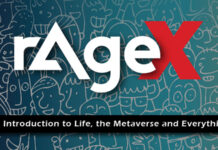[Opinion]
The term “serious game” may well read as an oxymoron – isn’t a game by its very nature meant to be fun and playful rather than, well, serious?
But for the longest time, games have been the means by which humanity brings structure to interactions, in much the same way that stories help us make sense of the world.
It is this understanding of the function of games that makes a brilliant case for the role of serious games as a key learning tool in contemporary business, consumer and educational environments. A serious game has an outcome other than entertainment, and is often associated with the drive to shift consumer behaviour in some way.
There are four main characteristics that define a serious game. The first is that a game has a goal, opposed to a toy, which is effectively a game without a goal. A game also has rules, feedback systems and relies on voluntary participation.
As such, brands are increasingly waking up to the value of games as a means of interacting with their audiences to drive marketing outcomes. Games offer a way for brands to deepen their purpose with customers and as purpose-lead companies continue to outperform those that aren’t clear about their purpose, the game is on to share that purpose with audiences in a relevant, meaningful and engaging way.
The role of serious games in immersive learning is on the rise too as its potential for engaging users in a way that drives meaningful outcomes is increasingly recognised. The challenge in designing games and learning experiences is that it needs to be super simple at the beginning and gradually become harder and more complex, but if it’s too hard players are going to fall over and have to start again. On the other hand, by making it too simple the risk is that it leads to boredom and loss of interest.
Games are especially useful in developing skills around attitude and skills, as the focus shifts to valuing not what an individual knows per se, but rather whether they will be able to get the work done. We know that progressive institutions are increasingly less interested in content learning, such as that offered by a university qualification, for example, but rather the combination of skills and attitude that allow for ongoing learning, problem solving and flexibility.
The KASH acronym is a learning term to refer to knowledge, attitude, skills and habits, and speaks to the outcomes that we design for in serious games, with the ultimate goal of shifting behaviour at scale.
Immersive games and experiences, whether for brand engagement or immersive learning, have four key elements, each of which work interdependently with the other to generate the desired outcome. In the first instance there is the story, which includes the characters, the world they inhabit and the events around which their interactions are centered. The mechanics of the games legislate the goals, rules and feedback to bring balance to the experience. The aesthetics make provision for the sensory stimulus, the visuals, sounds, haptics and overall setting. Lastly, the technology brings it all together, be it in the form of an app, AR, VR or the web.
There’s a universality to games in that they can be used by everybody and in a variety of different ways. We all learn through play, without necessarily being consciously aware of it. Serious games understand that play is the default and that everything else is just layered on top of that.
Far from a niche interest, gaming today is bigger than the television and cinema industries combined. Any brand or organisation serious about growing and retaining its relevance in 2022 and beyond simply can’t afford to overlook the seriousness of serious games. Serious games are a key feature of learning and engagement in the Fourth Industrial Revolution. And it’s called the revolution – rather than evolution – for a reason, the rate of development is rapid and revolutionary.




















































































